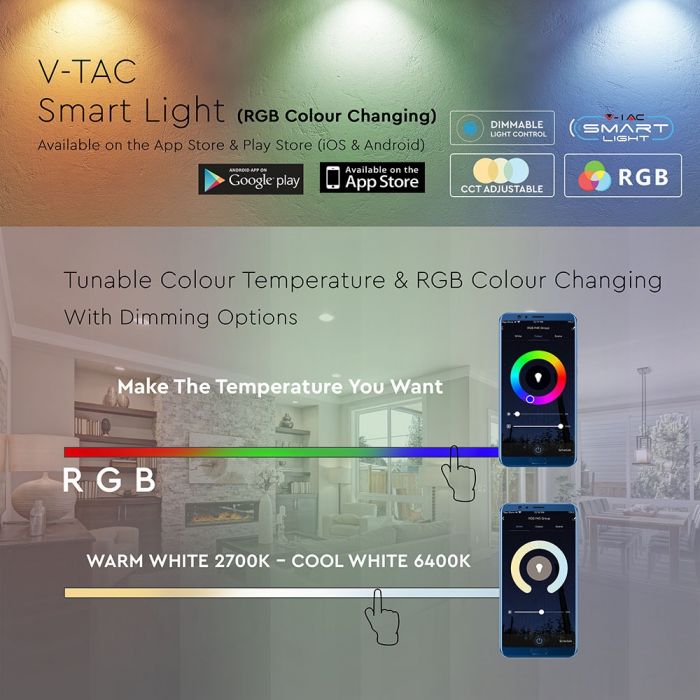The increasing shift from incandescent and halogen lightbulbs to LED lights has come with a range of benefits, including reduced environmental effects, reduced power bills and increased brightness. However, LEDs have one key drawback which means some people still choose traditional bulbs – they are harder to dim.
Because the technology used to power them is more complicated, it’s not as simple to include dimming functionalities with LEDs as it is with traditional bulbs. But does this mean they can’t be dimmed at all? In this guide, we’ll explain whether you can dim LED lights as well as the key differences between dimmable and non-dimmable lights, how to know if your lights are dimmable and other common questions.



Are LED lights dimmable?
The most straightforward answer to this question is yes, LED lights can be dimmed. However, this isn’t the case for all LEDs as it depends on the technology used. Plus, there isn’t always a need for a dimmable light.
Dimmable LED lights work by controlling the amount of electricity that goes through the LED. The more electricity, the brighter the light and vice versa. You will require a specific LED dimmer to be able to control the brightness of your LED lights because older lightbulbs do not work in the same way.
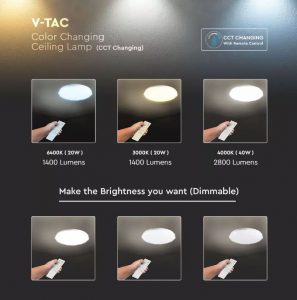
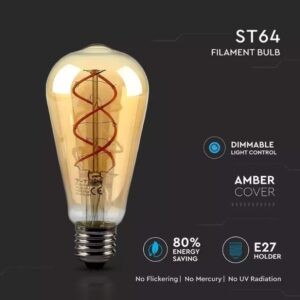
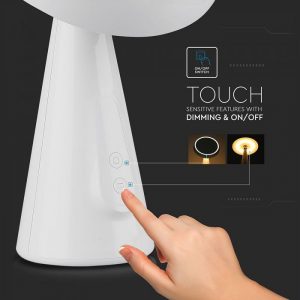
It’s worth bearing in mind that dimmable lights require more complicated internal electronic engineering, so they are more expensive to make.
How do I know if my LED bulbs are dimmable?
First, you need to look at the packaging of your LED lights. If the packaging clearly states they are dimmable, then you are in luck. If this is not mentioned, it’s best to assume they are not dimmable.
To know whether the lighting system in your home is dimmable, look out for a dimmer switch. Visually, these are different from normal on/off switches, usually in the form of a slider or knob. Before installing a dimmable LED bulb, ensure it is compatible with your lighting system.
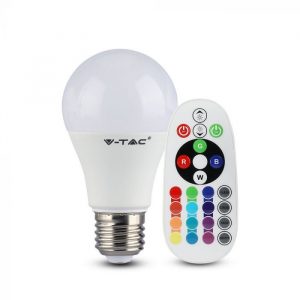
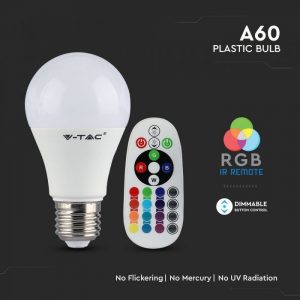

How do I dim my LED lights?
Dimming your LED lights begins with ensuring you have bought dimmable bulbs and have installed a suitable dimmer switch. You may choose a trailing-edge dimmer, which works by reducing the voltage going to the bulb. These are compatible with low-wattage bulbs rather than high-wattage bulbs, making them the optimum choice for LED bulbs.
You may also opt for a leading-edge dimmer, which is compatible with most dimmable bulbs, not just LED, so this can be a more flexible option. They reduce the current flowing through the bulb. These come in different wattage ratings, so put some time into choosing the one that is most compatible with your bulbs.
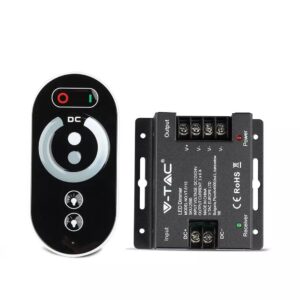
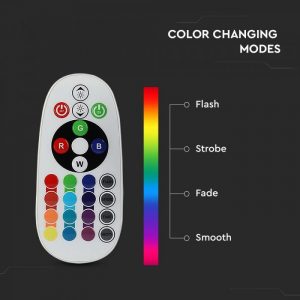
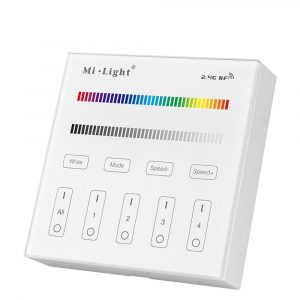
Whichever you choose, the dimmer should work easily by twisting the knob slowly to achieve the brightness level you want. Be sure to do some research into which type of lamp is best suited for your room and what dimmer is compatible with it to avoid issues with the light. Remember that the wattage rating of the dimmer should be higher than the wattage of the lightbulb to avoid overheating.
FAQs
What is the difference between dimmable and non-dimmable light bulbs?
On a surface level, the key difference between dimmable and non-dimmable light bulbs is that one is capable of adjusting the amount of light it gives off while the other isn’t. A dimmable light is perfect for a living room or office that needs bright light for some activities like working but benefits from being dimmed at night for relaxation or when there is more natural light.
Non-dimmable lights do not have this benefit but they are suitable for cases where a constant level of light is necessary. This can include bathrooms and kitchens within the home, or traffic lights and street lights.
Internally, dimmable LEDs have circuitry which means they’re able to respond to changing phase forms that produce the dimming effect. On the other hand, non-dimmable LEDs are designed to either be fully powered on or off, and their inner circuitry can’t handle the dimmable forms.
What happens if you put a non-dimmable LED bulb in a dimmer?
Even if you intend to keep the dimmer at 100% light at all times, you should never put a non-dimmable LED bulb in a dimmer light circuit. It may appear to be functioning like normal, but due to the complex internal structure of a dimmer system that normal bulbs are not designed to handle, it will shorten the lifespan of the bulb significantly. The brightness will not be controllable and may appear darker than it should or will flicker. It may make strange humming noises too, and eventually, it will break.
Can dimmable LED bulbs be used in regular lights?
You can put a dimmable bulb on a non-dimmable circuit with little issue, but you will not be able to dim the light. This may not be financially effective as dimmable bulbs tend to be more expensive than non-dimmable bulbs.
How do I know if my dimmer switch is LED compatible?
Check the minimum and maximum load range of the switch itself. The wattage rating of the dimmer should be higher than the wattage of the lightbulb. You can contact a professional to help you with this if you are uncertain.
There are also certain signs that your dimmer is not compatible with LED bulbs, such as flickering lights, buzzing sounds, not dimming or getting brighter on command, and regular replacements being needed.
Are LED strip lights dimmable?
Yes, most LED strip lights come with a remote control which has the option to dim and brighten the lights, as well as various colour and fade options. This uses pulse-width modulation.










